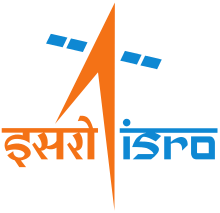IRNSS-1F
| Mission type | Navigation |
|---|---|
| Operator | ISRO |
| Mission duration | 12 years |
| Spacecraft properties | |
| Bus | I-1K |
| Manufacturer |
ISRO Satellite Centre Space Applications Centre |
| Launch mass | 1,425 kilograms (3,142 lb) |
| Power | 1,300 W |
| Start of mission | |
| Launch date | 10 March 2016 10:31 UTC |
| Rocket | PSLV-XL C32 |
| Launch site | Satish Dhawan Second |
| Contractor | ISRO |
| Orbital parameters | |
| Reference system | Geocentric |
| Regime | Sub-Geosynchronous Transfer Orbit (sub-GTO)[1] |
| Perigee | 284 km (176 mi)[2] |
| Apogee | 20,657 km (12,836 mi) |
IRNSS-1F is the sixth navigation satellite out of seven in the Indian Regional Navigational Satellite System (IRNSS) series of satellites after IRNSS-1A, IRNSS-1B, IRNSS-1C, IRNSS-1D and IRNSS-1E. The satellite is one among the seven of the IRNSS constellation of satellites launched to provide navigational services to the region.[2] It was launched aboard a PSLV-XL rocket bearing flight number C32 and was successfully put into geosynchronous orbit at 1601 IST on 10 March 2016.[3] [4]
The satellite carries two types of payloads. The navigation payload transmit navigation service signals to users and ranging payload consists of C-band transponder that facilitates accurate determination of the range of the satellite.[2]
IRNSS-1F has a 12-year mission life.[1]
See also
- Communication-Centric Intelligence Satellite (CCI-Sat)
- GPS-aided geo-augmented navigation (GAGAN)
- Satellite navigation
References
- 1 2 "ISRO successfully launches navigation satellite IRNSS-1F.Earlier satellite launch of IRNSS 1E was on jan,2016 - PSLV C31". Retrieved 2016-03-10.
- 1 2 3 "India's sixth navigation satellite, IRNSS-1F, put into orbit". The Hindu. Retrieved 2016-03-10.
- ↑ "IRNSS". space.skyrocket.de. Retrieved 6 December 2014.
- ↑ "IRNSS-1F". isro.gov.in. Retrieved 9 March 2016.
